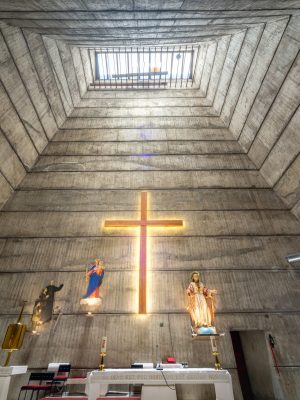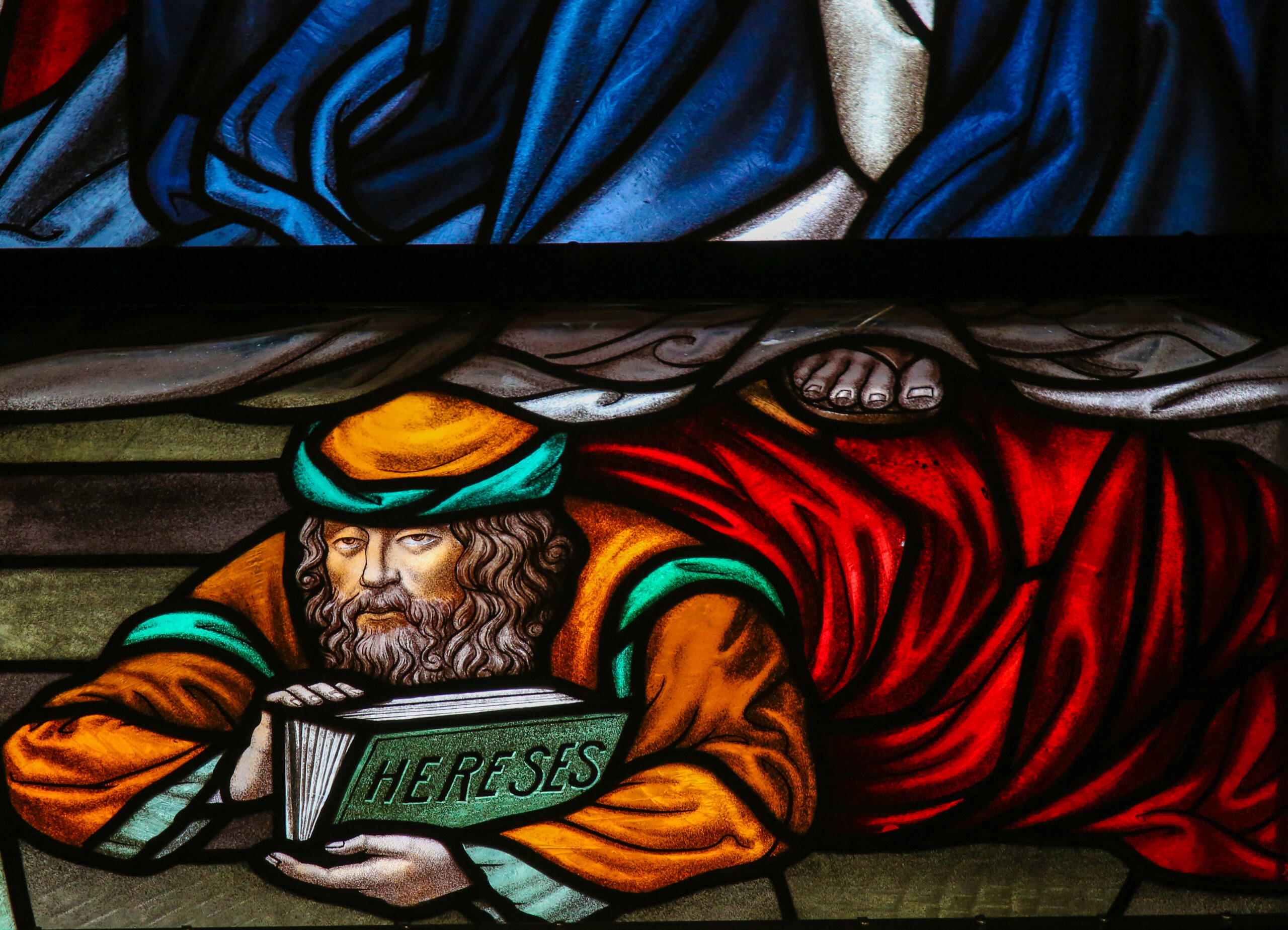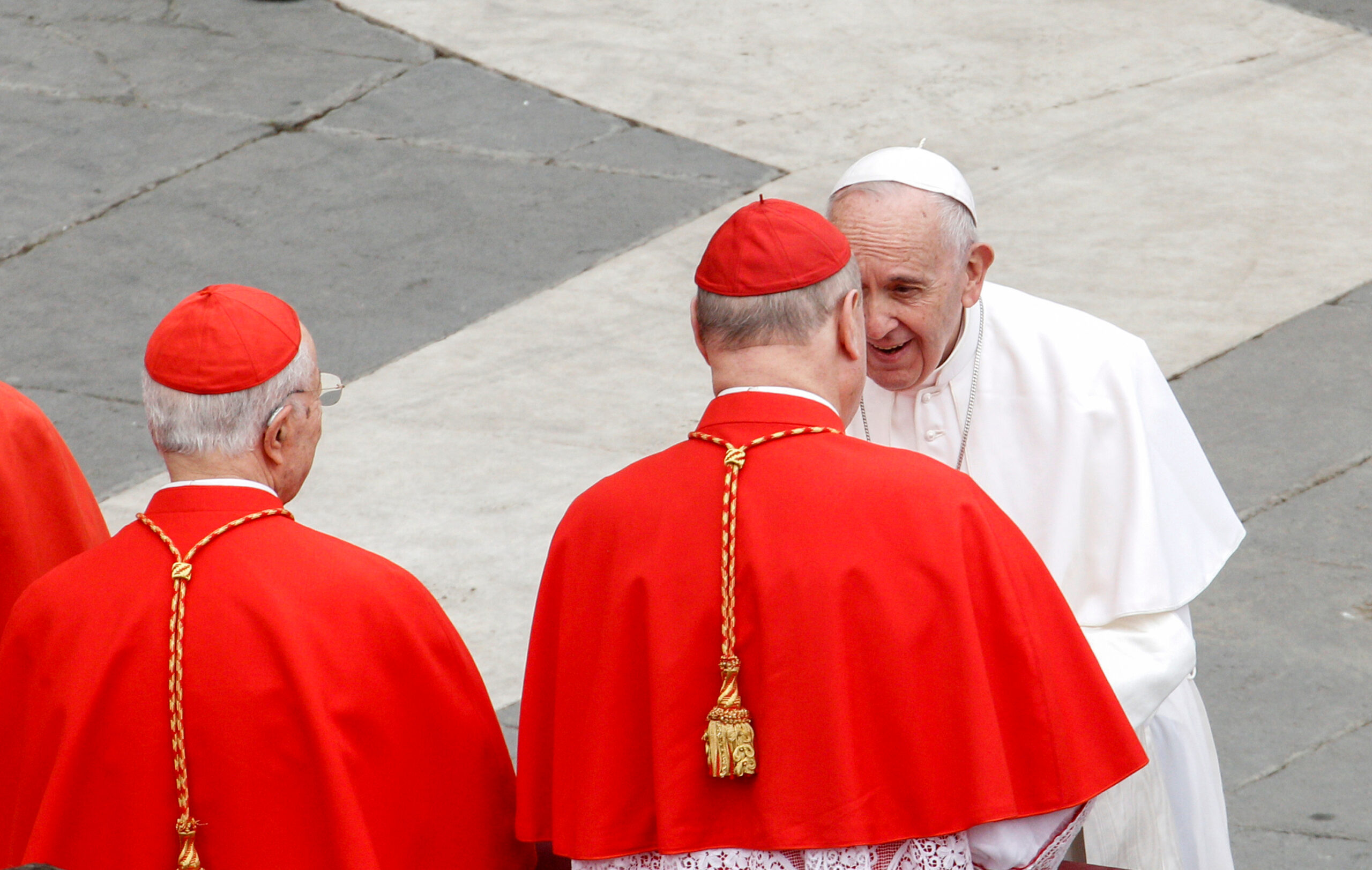“What we have is given by God and to teach it to others is to return it to Him.”
—Gian Lorenzo Bernini
In the Catholic tradition, church architecture reflects the classical footprint. This is because classic architecture is unparalleled in its dignity, beauty, harmony, and intelligibility to the common man. It speaks of greatness, order, and hierarchy.
Classical architecture hearkens back to Republican Rome and Classical Athens. It is something that is time-honored and timeless. It speaks to the soul and raises the intellect and will, the heart and mind to lofty thoughts and heavenly aspirations.
More and more young Catholics are expressing concern and horror over contemporary church architecture that is modernist in origin, thrust upon Catholics since the 1960’s and before, seen by them as an aesthetic disaster and an intentional rupture incompatible with the past, present and future.
They are asking, “How did churches get so ugly?” While for young Catholics of today the modernist style is perceived as vulgar and aggressively offensive to the senses, much of the older generation has an idolatrous admiration or capacity for it. Here, the generational gap is felt most strongly between the baby boomers of the 1968 cultural revolution and those born and raised in the rubble of its aftermath. The best explanation could be that the new generation is not looking with their shifting emotions but with the eyes of the soul.
Beginning in the 1950s, a program and acceleration of ugly church architecture began in Europe and North America that spread throughout many parts of the world. Countless hideous airport and bomb shelter style churches were built that although wildly popular when they were first designed—reflecting the utopian spirit of the age—are now seen as lacking the magic to stir man’s soul.
It is obvious for anyone with a heart to see that modernist church architecture is soul-killing. What it is lacking in inspiration it seems to try to compensate with optimism—announcing itself as a visitor from the future. There is just one problem: architectural fads come and go. Only the classical reaches back to the sempiternal fonts of the best of the ancient world and remains relevant.
It comes as no surprise that the progenitors of the modernist architectural movement were not religious believers or Christian in belief. Many of them were agnostic or atheistic in their personal belief which no doubt influenced their total lack of aesthetic scruples.
The modernist architects who pioneered the movement were not interested in the divine mandate to teach and baptize all the world until the end of times. Instead, they are best remembered for their self-promotion, drive for survival, power and influence, and their lack of interest, like the logical positivists of the 1920s, in the importance and reality of metaphysics.
Modernist design of churches carries a message of not merely un-truths but the opposite of truth. Modernist church architecture has proven by and large a failure, giving birth to a type of dystopian barbarism in the area of ecclesiastical beliefs, reflected especially with the imposition of the style of brutalist architecture first seen in the 1950s.
Younger generations find ugly, strange, and off-putting modern church architecture like an intruder. It has been imposed from without as a stranger and it lacks historical references. It speaks a different language, producing an environment that is degrading and dehumanizing.
Behind it is the ideology and heresy of modernism, which came more into vogue after the Second World War and exploded overtly into the world scene in the 1960s. The problem is that it represented a complete rejection of the past. This came after the construction of so many beautiful Catholic church buildings in the 1920s, 1930s and 1940s when during a golden age of brick and mortar so many beautiful churches, schools, hospitals, and convents were built and dedicated. After that boom, the modernist style made its rude debut and was unstoppable in its secular popularity. It was almost as if the general population was suddenly tired of greatness and beauty. Modernist architecture replaced the poetry of design with its spirit of mechanization and functionality.
This stark style was embodied by concrete, steel, and glass box. The timing was perfect. The style became wildly popular with a post-war generation that felt itself coming into a new “modern age” of awareness and technological advancement (i.e., space travel). Today, this style thankfully does not resonate with the young who are searching for more, looking for a refuge from the cruelty of modernity in all its dystopian lie.
Meanwhile, there has been a growing movement among a new generation of Catholic architects to resist modernist roots and return to pre-modernism, reaching backwards to the particular forms, principles, and standards of the classical template and the idioms derived from it.
Catholic churches are again being built that equal, and in some cases excel, the majesty of the religious architecture of the past. This can be seen, for example, with the main campus chapel at Thomas Aquinas College in Santa Paula, California. The new chapel was unveiled to universal acclaim, and it resembles something from seventeenth-century Florence.
The adulation of the past for this modern architecture has faded, following the pattern of every fad that comes and goes. Classicism stirs the soul while modernism makes the blood boil.
One important book that has influenced a great many Catholic architects the past two-hundred years is Pugin’s Contrasts. The author, Augustus Pugin, was an English architect who is remembered for having pioneered the Neo-Gothic revival of the 1800s. Pugin ignited a universal revolution in architecture and is seen as a key influencer even today in Catholic architectural circles.
Pugin’s vision of architecture was unique and questioned the leading architectural practitioners of his day. The book was published in 1836 and is one of the most important books on the subject because it questioned the narrative. It contrasted the architecture of the great architects of his day with the great works of the medieval period and showed that the older architecture was in fact better.
The agenda of Pugin was clear: to restore the Catholic faith through beauty, through beautiful architecture. His church designs responded first to gravity, giving a sense of stability and permanence. He invented the Gothic Revival that spoke of other-worldliness, with churches that were designed vertically to guide the eyes upward. This is in sharp contrast to the aggressive box structure horizontals that were to come later with the rise of the modernist movement.
For Pugin, it was important that church architecture suggested stability. And he showed that different styles could exist harmoniously, such as the combination of the Arts and Crafts with the Gothic Revival. This was done through natural materials and their geometries all working together, furthering the stability of the architectural creation.
The widely accepted narrative of modernism is that it was some kind of logical development from previous tradition. Catholics need to know this is a fantastic claim in light of its own rupture with the past. Modernism was a rebellion and tabula rasa that produced a totalitarian architecture.
An artistic product must always be assessed aesthetically on its own merits which in sacred architecture must show itself to be genuinely artistic, free from potential anti-Catholic political ideology and must include harmony and grandeur.
The finished product should also be in harmony with the existing townscape surrounding the church, something which the modernists specifically rejected. Only someone who sees with an ideology and not human eyes enlightened by divine revelation and transformed by the mysteries of life in Christ could conclude that modernist architecture is more fitting and something that should continue to be pursued for future church construction.




